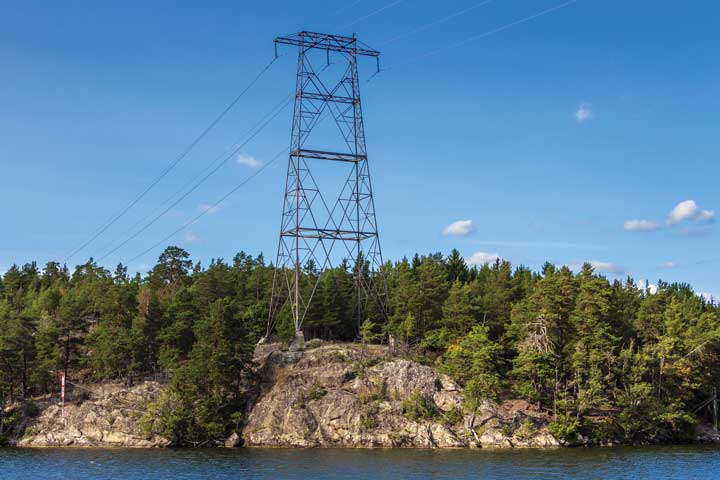No one knows how clcpa will work. That’s the point.
Five years ago, New York state lawmakers voted to enact the most impactful legislation in a generation. Just don’t ask them how it will work.
The Climate Leadership and Community Protection Act, or CLCPA, gave sweeping powers to state agencies to reduce greenhouse gas emissions. It set aggressive–arguably unattainable–goals, and empowered state regulators to transform not just the electric grid but the entire economy using every imaginable lever and knob in government.
As New York reaches the halfway mark to its 2030 emissions targets, the disconnect between those goals and reality is coming into view.
Sitting alongside former Vice President Al Gore, Governor Andrew Cuomo signed CLCPA in 2019 without knowing what implementation would cost. When an official estimate was published three years later, it sounded too good to be true: $270 to $295 billion over three decades.
That’s because it was. The figure was based on the state’s estimates that CLCPA would require spending an additional $4.9 trillion by mid-century, offset by $4.3 trillion in “avoided” costs on things such as fuels and further shrunk by applying a discount rate to reduce the size of the most distant expenses.
Despite a requirement in the law, officials still haven’t deigned to ballpark the price of achieving any individual parts of CLCPA, let alone the entire program.
What figures have been published are eye-popping: officials in March estimated that the planned shuttering of natural gas-fired power plants by 2040 would require battery storage that could inject 24 gigawatts into the grid. These batteries, mostly located downstate, would have to operate for up to four days during wind “lulls” that periodically idle land-based or offshore wind turbines. (Indian Point Energy Center generated about 2 gigawatts). The same report, New York’s “Energy Storage Roadmap,” said the state was spending an average of $567 per kilowatt-hour on energy storage systems (a figure that has increased since 2021).
While real costs will likely drop over the next decade, it is remarkable that the state has been so casual about a looming expense that today by its own figures stands at more than $1.3 trillion, or $68,000 per resident. That’s without figuring out the cost of adding wind, solar and other renewables and moving that electricity to the downstate population centers where it’s needed.
And that’s just one part of one sector: CLCPA calls for electrification across the entire economy.
Yet costs aren’t CLCPA’s most problematic feature.
Unnecessary expenses are, unfortunately, not a foreign concept to New York businesses.
Yes, they stifle economic growth, contribute to outmigration, and deter investment, but they are something around which firms plan and adapt.
But adaptation is difficult if not impractical under CLCPA.

Businesses for five years have been trapped in various holding patterns, waiting to find out how the state’s climate targets will translate into specific taxes, bans, and other regulations.
CLCPA tasked the Department of Environmental Conservation (DEC) with issuing these regulations by the end of 2023, but so far the agency hasn’t. Commissioner Basil Seggos departed in April, and Governor Hochul still hasn’t named a permanent replacement, let alone gotten him or her confirmed by the state Senate.
The CLCPA regs are expected to include bans on replacement gas and oil furnaces, stoves and other appliances. But among the biggest wildcards is a proposed “cap and invest” program, under which the state would sell allowances for greenhouse gas emissions. Proposals floated by DEC would have the state adding as much as to $12 billion in costs, mostly on fuel, by 2030.
Part of why DEC has been slow to finalize these regulations: it remains unclear whether the cap and invest rules would apply to power plants, which are already subject to a separate emissions program (the Regional Greenhouse Gas Initiative). State officials have acknowledged a high risk of “carbon leakage”—that emissions avoided in New York are likely to instead shift to neighboring states.
But again, these still come back to questions about the costs of energy. Firms also face growing uncertainty about the availability of both natural gas and electricity.
That uncertainty is the point. A manufacturer can hedge against a price increase, but it’s nearly impossible to fully insure against losing a customer because of an energy disruption.
New York in 2016 started blocking gas pipeline projects that would either maintain system reliability or allow new connections by raising specious concerns under the federal Clean Water Act. CLCPA put that opposition on steroids, inviting more opposition and reducing the likelihood gas infrastructure (or related projects) would get built.

National Grid’s plan to improve the gas grid around Albany were scuttled in 2022 amid opposition both from activists and the Public Service Commission, which has become unmoored from its historical focus on service reliability and utility rates.
More recently, Albany slowed the Iroquois pipeline’s “Enhancement by Compression” project, which aims to bring more gas to the Hudson Valley, New York City, Long Island and Connecticut. Their shenanigans have included sending Iroquois on a detour through an objectively superfluous months-long review at the Department of Public Service. DEC still hasn’t acted on Iroquois’ application, despite deeming it complete almost two years ago.
That’s spilled over to the electricity market.
DEC in 2021 blocked a pair of applications for power plant upgrades in Queens and Orange County. Citing CLCPA, the agency said displacing less-efficient, higher-emitting power plants wasn’t enough reason to build new ones.
The competitive wholesale electricity market has arguably been New York’s least-appreciated success of the past quarter-century. But with the state preventing new power plants from coming online, the price signals that helped meaningfully drive down costs and improve reliability have less and less meaning.
What’s worse, DEC now insists it has the power to make determinations about grid reliability as it relates to new power plants–something for which DEC lacks both expertise and legal authority.
The New York Independent System Operator, which runs the state electric grid and oversees the wholesale electricity market, has raised increasingly serious concerns about how grid reliability will be affected as power plant retirements outpace additions and as electrification, data centers, and chip manufacturers drive up demand.
“The potential for delays in construction of new supply and transmission, higher than forecasted demand, and extreme weather are threatening reliability and resilience to the grid,” NYISO officials wrote in a 2024 report.
The electric grid picture will be further complicated when, not if, older large power plants retire.
The opponents of Indian Point, who successfully forced the plant’s premature closure, have spiked the ball in recent years as they have pointed out this didn’t leave the lower Hudson Valley gripped in rolling blackouts.
Like many of CLCPA’s defenders, they fail to differentiate between luck and wisdom. Luck, unfortunately, eventually runs out.




